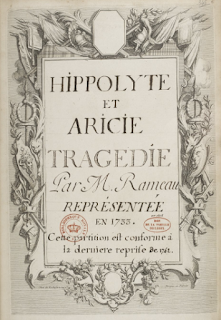Bartok/Janacek double bill
 ONP Palais Garnier, Tuesday February 6 2007
ONP Palais Garnier, Tuesday February 6 2007Janacek – Diary of one who disappeared
Orchestrated by Gustav Kuhn
Bartok – Bluebeard’s Castle
Conductor: Gustav Kuhn. Production: Alex Ollé and Carlos Padrissa, La Fura dels Baus. Man: Michael König. Woman: Hannah Esther Minutillo. Duke Bluebeard: Willard White. Judith: Béatrice Uria-Monzon. Orchestra of the Opéra national de Paris.
[Photo: Shafahi]
Seven doors or seven veils?
There’s a great deal to be said for sitting on the front row at Garnier. There’s nobody (apart from the orchestra) fidgeting in front of you. The orchestral sound envelops you without drowning the voices. You’re close enough to appreciate the acting, which in a production like this is worth seeing. And should any of the singers happen to be underpowered for the house, you’re in no position to tell. But with video projections taking up the full extent of the proscenium, I suspect we were unable to “read” the effects as well as people a dozen rows further back. And of course, if you understand neither Czech nor Hungarian, you risk a crick in the neck from reading the supertitles…
This double-bill at Garnier offered an intriguing coupling of works composed about a decade apart. As, in the Diary, the Man emerged from a hole in the stage like Iochanaan from his cistern and at one point held up his own waxwork head; and as the seven doors opened, in Bluebeard’s Castle, by Judith were, in this production, successive gauzes rising and falling, you might think La Fura dels Baus had a Salome connection in mind. Perhaps that’s a bit far-fetched. The real link, presumably, was the theme of (fatal) love for a social outcast of some sort; though with one piece running into the next without an interval, I wondered if the Diary was also meant to be seen as an account of Bluebeard’s first forays into sex, a prelude to the second piece.
The staging of the Diary was simple and basically, apart from searing spotlights, horizontal. The Man‘s head was alone at first, brightly lit on a black stage. It was later joined by the Woman, not a gypsy but a whore in hot pants, a red satin blouse and black patent, platform-soled, high-heeled shoes. As things hotted up, near-naked dancers crawled in from the wings to form a sea of writhing flesh around the hole; and when the Man sang of now hurrying every evening to the clearing to gather strawberries, hands rose out of the hole to caress his bare torso, implying that “strawberries” was a euphemism for multiple liaisons, not just with the gypsy/whore and mother of his son.
The same hands emerged out of the bed that was one of the rare props in Bluebeard, as Judith came to realise that what she’d heard about her husband was true. Here, again, the stage was largely bare and set-less. Instead, multiple, very fine gauzes were used with live and recorded projections, both video and still, to create an unsettling superposition of undulating images, many of them of the Palais Garnier: the grand staircase, as Judith and Bluebeard arrived; the main gallery in the treasury scene; the statuary and view of Paris from the rooftops for Bluebeard’s empire. Some of the images were filmed on stage by Bluebeard and Judith with a camcorder; at one point they were snapped several times with a flash – but the photos flashed up on screen were of startlingly more violent scenes.
In the secret garden, the “flowers” were a curtain of cellophane banners bearing the text in white letters. For the final door, a stunningly unexpected, heavy shower of rain with a giant photo of Bluebeard behind that Judith, arms outstretched, went to join. The other wives, all identical to her, appeared and disappeared mysteriously at various points and various levels of the set. Overall, the production was modern and innovative, allusive and intriguing and beautiful. A success, then, for la Fura dels Baus, who not so long ago were booed furiously by part of the audience for their “inflatable mattress” Zauberflöte.
Casting was strong throughout, both vocally and dramatically. Michael König made (fortunately) a far more virile, valiant Man than Ian Bostridge, singing with both power and nuance. Hannah Esther Minutillo did what she had to do. Willard White and Béatrice Uria-Monzon showed understandable signs of fatigue towards the end of Bluebeard (very nearly the end of the run, too), but nothing to complain about after acting up a storm and giving us such a display of experience and artistry.
Gustav Kuhn’s orchestration of the Janacek has come in for some stick in the press and on the web. I suspect, however, the problem wasn’t so much with his instrumentation, which sounded fine to me - just like discovering another Janacek opera - but with his plodding, pedestrian conducting (as for La clemenza di Tito last September). The orchestra was well-behaved enough but the music lacked a sense of momentum, of forward drive.
And why go to the trouble of bringing in a digital organ (I could see the words “Grand Orgue en Liberté” engraved on the built-in music stand) if, at the fifth door, with extra brass sending shafts of gleaming noise from boxes beside the stage, you can’t hear it?



Too bad about the organ in A Kékszakállu herceg vára, Nigel! The huge brass and the organ answering was stunning when we heard it in Boston's Symphony Hall.
ReplyDeleteWhat a great program, though.
Cheers,
~Karl